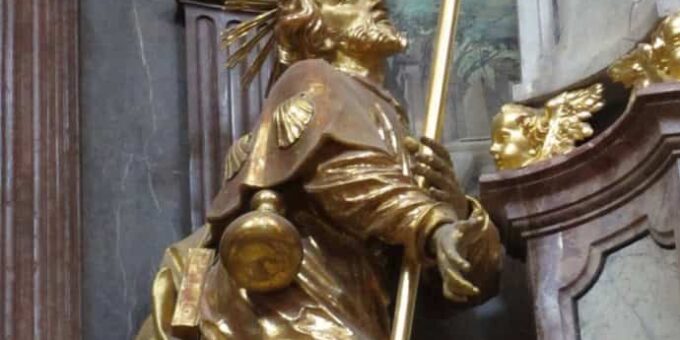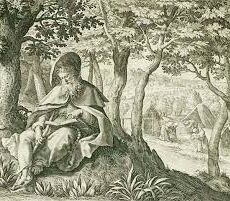
Report by Johnny McLaughlin
Saint Coloman is an Irish saint notable not for what he did in Ireland, but rather for his unique case of martyrdom in Austria.
There are practically no sources regarding Coloman’s life in Ireland. There is no record of the
year of his birth, where in Ireland he was born, or what he did before his pilgrimage in the year 1012.
There is, however, a strong consensus among both medieval and modern scholars that
Coloman was, in fact, Irish and probably a monk. Some scholars in the late medieval period
speculated that he was of noble birth, but there are no earlier records that support this idea.
Coloman’s story begins on the European continent. Coloman was on a pilgrimage to the
Holy Land, and traveled through Austria. He stopped to rest near the town of Stockerau, which
is close to Vienna.
To understand what happened next, we must delve into the geopolitical situation around Vienna
at the time. Stockerau was at the time in a border region within the Holy Roman Empire, and
thus was often fought over by neighboring kingdoms. The kingdoms of Austria, Moravia, and
Bohemia (the latter two parts of the modern-day Czech Republic) was in a three-way struggle
over territory and had been in a constant state of war for many years. Stockerau was under the
rule of Austria, in particular the Babenburg dynasty.
The locals of Stockerau were used to foreign soldiers from Moravia and Bohemia raiding their
town. When they saw Coloman, they immediately suspected him of being a spy. Coloman could
not speak German and thus could not defend himself. The locals did not understand Gaelic, nor could they differentiate it from Czech, so they concluded he was an enemy.
He was arrested, tortured, and finally hung on a gibbet in Stockerau.
Coloman’s body hung for more than eighteen months. During that entire time, his body remained incorrupt. In addition, the gibbet he hung from sprouted flowers. Because of this, and the realization he was not a spy and only a monk on pilgrimage, the very people who murdered him venerated him as a saint.
The Babenburgs, who ruled Austria, declared Coloman a martyr and the patron saint of Austria, and that designation continued until 1485. They also were quick to argue that Coloman’s martyrdom sanctified the land around Stockerau, placing it under divine protection (a duty given by God to the Babenburgs, of course, which they humbly accepted). This, and the further declaration of Coloman as a universal Christian saint not just for Austrians, but for the Moravians and Bohemians living in the area, decreased tensions between the three kingdoms and brought an end to their wars.
The Babenburgs transported Coloman’s remains and relics to Melk Abbey, where they exist to this day. His cult flourished during the Middle Ages in Austria, where he was invoked against plagues and disease. His feast day is October 13.
Saint Coloman, pray for us!
Sources:
https://omniumsanctorumhiberniae.com/2013/10/13/saint-colman-of-stockerau-october-13-2/
https://www.ecatholic2000.com/butler/vol10/october48.shtml
https://docslib.org/doc/9848561/1-the-babenbergs-and-the-cult-of-st


